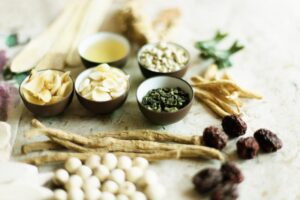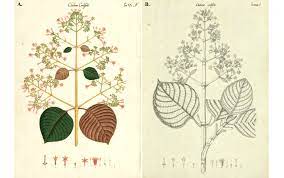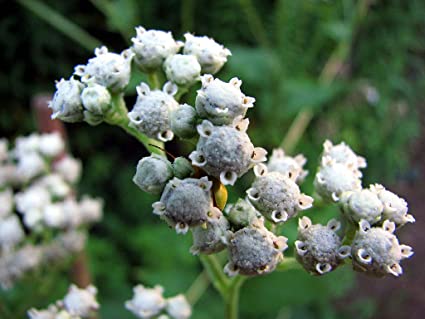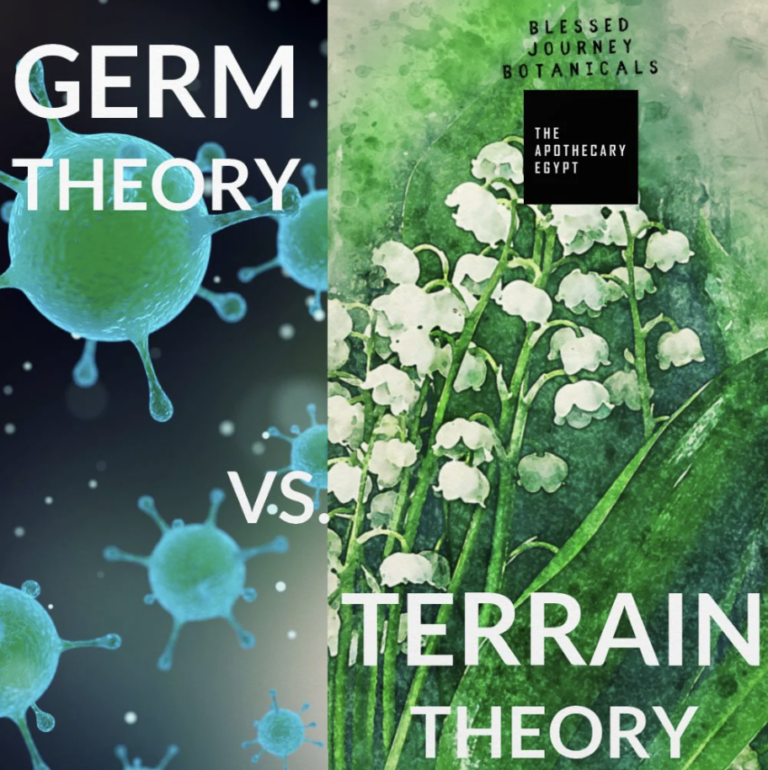Modern Chinese Medicine Treatments for Rheumatoid Arthritis
Rheumatoid Arthritis
 RA is an autoimmune related chronic progressive inflammatory disorder of joints. Around 1.3 million people in the United States have RA, representing 0.6 to 1% of the population. Osteoarthritis (OA) is the most common form of arthritis, affecting over 32.5 million people in the U.S. The Arthritis Foundation (AF) estimates that the global prevalence of RA is 0.5 to 1% in developed countries
RA is an autoimmune related chronic progressive inflammatory disorder of joints. Around 1.3 million people in the United States have RA, representing 0.6 to 1% of the population. Osteoarthritis (OA) is the most common form of arthritis, affecting over 32.5 million people in the U.S. The Arthritis Foundation (AF) estimates that the global prevalence of RA is 0.5 to 1% in developed countries
It is a disabling and painful condition, which can cause losing joint function and mobility if not adequately treated. In the disease course there may be some spontaneous remissions but over all it is a continuously progressing disease and could lead to joint deformities and losing functions. Systemic extra joint manifestations are also common in RA.
The pathology of RA is mainly inflammation in multiple joints, which causes pain, hot, swelling, and deformities. It also affects other organs, such as lung, kidney, and blood vessels, and cardiovascular functions therefore it is a systemic disease.
It affects women five times more often than men. The onset usually starts after 15 years old until age 80. The peak of incidence in women is around age 40 to 50 and for men will be slightly later. We sometimes also see patients being misdiagnosed with RA that end up having Lyme disease.
The cause of RA is still not clear and it is closely related autoimmunity. It has genetic trend and regional differences in incidence, such as people living in hot climate are less likely to get it. It is associated with the inherited tissue type major histocompatibility complex (MHC) antigen HLA-DR4 therefore family history is an important risk factor.
Life style also affects its prevalence such as smoking can increase its incidence and moderate alcohol drinking can lessen its incidence.
RA rarely causes death directly but it could reduce the lifespan of patients. Proper active treatment can extend the lifespan of RA patients by increasing mobility and avoiding systemic complications. If a patient responds to treatment well, indicates a better prognosis.
Tradition Chinese Medicine Cognition of RA
 In TCM RA belongs to “痹症(Bi Zheng),” which literally can be translated as “blockage damp-heat syndrome,” which means pain, swelling, and stiffness of muscles and joints due to an invasion of the muscles, meridians, bones and joints by pathogenic wind, cold, dampness, and heat etc. It can be sub-classified as “风(Feng) Bi” (Wind Bi), “寒(Han) Bi” (Cold Bi), “湿(Shi Bi)” (Damp Bi), and “热(Re Bi)” (Heat Bi) etc.
In TCM RA belongs to “痹症(Bi Zheng),” which literally can be translated as “blockage damp-heat syndrome,” which means pain, swelling, and stiffness of muscles and joints due to an invasion of the muscles, meridians, bones and joints by pathogenic wind, cold, dampness, and heat etc. It can be sub-classified as “风(Feng) Bi” (Wind Bi), “寒(Han) Bi” (Cold Bi), “湿(Shi Bi)” (Damp Bi), and “热(Re Bi)” (Heat Bi) etc.
“风 (Feng) Bi” (Wind Bi) is also called “行(Xing Bi)” (Moving Bi), which is caused by a relative excess of the pathogenic wind factor with chief manifestations of migratory pain and swollen of joints of the limbs. This could be rheumatic fever or the early stage of the RA with relatively mild symptoms.
“寒 (Han) Bi” (Cold Bi) is also called “痛(Tong Bi)” (Painful Bi), which caused by relative excess of the pathogenic cold factor with characteristics of agonizing and well located pain of the limbs and the body, relief by heat and aggravation by cold. This phenomenon can be explained by the cold activates the activities of the autoimmune antibodies, which are cryoglobulines and “cryo” means cold sensitive and can aggravate its activities. Cold can make all the RA symptoms worsen because the autoimmune activities are activated. Therefore patients should keep warm or even more to warmer places to live.
“湿 (Shi) Bi” (Damp Bi), is also called “着(Zhuo Bi)” (Stubborn Bi), which is caused by relative excess of the pathogenic damp factor and characterized by heavy feeling and numbness of the limbs and body with well-localized swelling and pain. This could be an advanced stage of the RA with deformities of joint and bone fusion.
“热(Re) Bi” (Heat Bi) is caused by a relative excess of the pathogenic heat factor and characterized by redness, swelling, heat and pain of the joints often with generalized fever manifestations. This is similar to the active inflammation of the joints and muscles of RA. Whenever the RA has a flare up, it shows the “Heat Bi” symptom pattern.
When extra-skeleton-muscular systems are involved, such as the kidney, lung, blood vessels, and the heart, “肾(Shen Bi)” (Renal Bi), “肺(Fei Bi)” (Pulmonic Bi), “脉(Mai Bi)” (Vascular Bi), and “心(Xin Bi)” (Cardiac Bi) could happen. We will discuss them later in the complications sections.
TCM has developed many effective herbal formulas for treating these types of RA. Particularly modernized TCM, the integrative TCM and Western Medicine, which we call modern Chinese Medicine (MCM) has made the treatment much more effective and can help patients to tapering off long-term dependency of harmful immune suppressive and steroids-based treatments and still get RA remission. Acupuncture has also been used very effectively for symptomatic releasing.
Pathogenesis of RA
The main pathological change of RA involves inflammation of the capsule of the joints, which causes swelling and hypertrophy (over growing) of synovial membrane, excessive secretion of synovial fluid, and the fibrosis (scaring) of the joint capsule, erosion of cartilage, and fusion of the joint bones, which causes deformation and lossing mobility. Extra-joint menifestations of RA are: anemia, inflammation in the lungs and the membranes around the lungs and the heart, kidney, vasculitis, Reynaud’s phenomena, and nodular lesions in the skin etc. Autoimmunity plays an important role in the chronicity and progression of RA.
The course of the disease varies greatly. Some people have mild symptoms, but in most cases the disease is a progressive one. Those with skin nodules may have a poorer prognosis. Patients with persistent synovitis, erosive cartilage damages, extra-joint complications, family history of RA, elevated erythrocyte sedimentation rate (ESR) and C-reactive protein (CRP), and increased clinical severity have a poorer prognosis.
If a patient responds to the treatment well the prognosis is better than those who do not respond to treatments. Because MCM treatments are individualized multi-targets regulatory treatment, patients will have more chances to better respond to the MCM treatments than conventional medication’s single target immune suppressive treatment, so MCM treatments can have better clinical outcome.
Clinical Features
Clinically the most obvious symptoms are symetrical multi-joints swelling, pain, hot, and red. Joint inflammation and cartirage damage causes limitation of the range of movements. Rheumatoid nodules can often find in the skin. Vasculitis, which causes Reynaud’s phenomena, can also happen in the patient of RA. Patient can have general global symptoms such as: morning stiffness, fatigue, low grade fever, malaise, lossing appetite and weight etc. Pale complexion is often seen in RA patients because anemia.
Systemic Complications of RA
Lung fibrosis is a complication of RA in the lung and it is rare but could also be a side effect of conventional immune suppressive therapies such as treated with methotrexate and leflunomide. Lung tissue nodules and pleural effusions (fluid in the chest cavity) are also associated with RA. About one quarter of RA patients may develop rheumatoid lung disease. In TCM it is called “肺(Fei Bi)” (Pulmonic Bi).
Kidney problems related with RA includes renal amyloidosis caused by chronic inflammation. RA patients have high level of circulatory immune complex (CIC), which is a combination of autoimmune antigen and antibody complex that may affect the kidney glomerulus directly through vasculitis and/or mesangial infiltrate. Some conventional medications for RA, such as Penicillamine and gold salts can cause membranous kidney disease. In TCM it is called “肾Shen Bi” (Renal Bi).
RA’s complication in cardiovascular system includes higher risk of blood vessel disorder, such as atherosclerosis, because the vasculitis (“脉Mai Bi” of TCM) caused by CIC. It is a risk factor of heart attack and stroke. Other complications include: pericarditis (inflammation of the pericardium), endocarditis (inflammation of the epthelimum of the heart), left ventricular failure, valvulitis (inflammation of the heart valves) and fibrosis. They are called “心(Xin Bi)” in TCM. Controlling systemic inflammation is the way to reduce cardiovascular complications.
Other less often complications of RA include dry eyes and mouth, serum alkaline phosphatase elevation, autoimmune hemolytic anemia, low white blood cell count (neutropenia), and peripheral neuropathy. Osteoporosis could also happen due to more cytokines released because long lasting inflammation and therapeutically use of steroids.
Diagnosis and testing of RA
Symptoms and signs can be used for clinical RA diagnosis are symmetrical multiple joint inflammation (pain, hot, red, and swellen) and morning body stiffness (morning body stiffness lasting more than one hour for at least six weeks). If these symptoms are there the RA diagnosis can be clinically established.
Medical imagery diagnosis such as X-ray, CAT scan, MRI, B-ultrasound can evaluate the degree of the joint inflammation and damages. X-rays of the hands and feet are generally performed in people with RA. In RA, there may be no changes in the early stages of the disease, or the X-ray may demonstrate juxta-articular osteopenia (bone density decreased in the ends of the bones), soft tissue swelling and narrowing of joint space. As the disease advances, there may be bony erosions and subluxation. X-rays of other joints may be taken if symptoms of pain or swelling occur in those joints. Other medical imaging techniques such as MRI and ultrasound are also useful in diagnosis of RA.
Blood immunological studies sould be done to test the presence of rheumatoid factor (RF), butabout 15% of patients are negative, which does not rule out RA. In the early stage of illness, RF is more likely to be negative and it converting to positive gradually. RF is also seen in other illnesses, for example Sjögren’s syndrome, chronic infections and in approximately 10% of healthy people, therefore the test is not very specific.
Blood testing of the anti-citrullinated protein antibodies (ACPAs) is more specific but less sensitive. Recently a serological point-of-care test (POCT) is for the early detection of RA. The test combines the detection of RF and anti-mutated citrullinated vimentin (MCV) and shows a sensitivity of 72% and specificity of 99.7% in RA diagnosis.
Other blood tests should also be done to help with the RA diagnosis and monitoring the respond to the treatments, such as erythrocyte sediment rate (ESR), C-reactive protein (CRP), complete blood count, kidney and liver function, and other immunological tests (e.g., antinuclear antibody (ANA)) etc.
Treatments for RA
Although we still don’t know exactly why RA happened, therefore we do not have a curative treatment for it, but we know what is happening, therefore we can control it to get it into a remission. Treatments for RA include supressing auto antibody production and the cytotoxic autoimmune T lymph cells activities to inhibit or halt the autoimmune reactions, which cause continous inflammation. The autoimmune antibody-antigen complex circulating (CIC) in the blood vessels and deposit in the joints and muscles combined with complements causes inflammation. To suppress autoimmune antibodies production and removal of CIC can greatly control the inflammatory activities. These are the main treatment strategies.
The treatment can prevent persistant joint tissue damage and it can release the pain and swelling to be used as symptomatic management also. Anti-inflammatory treatments are also useful to help control the joint tissue inflammation. Physical therapies can improve the mobility and life quality. Treatment protocol must also include treating extra-joint complications, such as anemia, lung, kidney, and cardiovascular problems.
Conventional Medicine
There is no curative treatment for RA up to now and the treatments available are using for alleviating symptoms and to get a remission and slowing down the disease progression. The treatments for releasing symptoms such as pain and swelling and preventing bone damage and joint deformition are trying to hold the progress of the disease and to maintain the quality of life of the patients. The following are the commonly used canventional RA treatments:
- Steroids, such as prednisone can offer quick relief but its side effects of long-term use are not desirable. It can be used as a pulse treatment to get a quick release from acute flare up of the disease and then tapering off when a remission is getting. Long term use can cause many undesirable side effects, such as hypertension, weight gain, water retention, osteoporosis, Cushing’s syndrome, and low libido, etc.
Besides the steroids, the following two main kinds of drugs are also used:
- Pain-killers for releasing pain and stiffness and non-steroid anti-inflammatory drugs (NSAIDS) are used for controlling inflammation, but they do not prevent joint damage or slow down the disease progression. Many of them are hard for the stomach and can cause gastro intestineal problems.
- Disease modifying anti-rheumatic drugs (DMARDS) are used for reducing the rate of damaging of bone and cartilage. DMARDs have been able to induce durable remissions and to delay or halt progression. This tretment mainly use chemically synthesized cytotoxic immune suppressive drugs, such as: azathioprine, cyclosporine A, D- penicillamine, gold salts, hydroxychloroquine, liflunomide, methrexate (MTX), minocyline, sulfasalazine, and cyclophosphamide. Because they are cytotoxic (toxic to the cells) substances and can cause liver, kidney, bone marrow, skin toxic adverse reactions. Cytotoxic drugs can cause cell mutation, which can create new autoimmunity causing new autoimmune diseases and even malignancy. Often their use is limited by their toxicity.
Conventional medicine has limited value in the management of RA therefore to develop alternative approaches is very important in the treatment of RA.
Modern Chinese Medicine Treatments for RA
MCM RA treatment includes herbal treatments and acupuncture. Although we do not have clear understanding why RA happened, but we know what is happening in the pathogenesis. The autoimmune reaction caused the body produces autoimmune antibody and cytotoxic autoimmune T lymph cells which against the body’s own tissues, such as the sinover membranes, the capsules, the cartilages and the connective tissues of the joints. Therfore we can suppress autoantibody production and the proliferation of autoimmune cytotoxic T lymph cells and removal of the autoantibody-autoantigen complex to control the inflammation of these tissues. Using pain releasing, dampness drying (reducing swelling), and heat-clearing (controlling inflammation) herbal remedies to release symptoms. If patient already has extra joint manifestation in the liver, kidney, and lung them we can also treating them with herbal protocols accordingly.
In last centurey 1960s and 1970s, some botanical glycosides extracted from several Chinese herbs have been studied and found to have steroids’ effects without its side effects. They have been sueccesviely used for autoimmune disorders, such as RA, systemic lupus erythromatosus (SLE), ulcerative colitis, psoriasis, Hashimoto disease, etc. The botanical glycosides are the main ingredients of Zhang’s herbal product AI-M Capsule which has been effectively used for treating autoimmune disorders listed above. Chinese herbal treatments are much benign and have much less side effects and can be used as a stand-alone treatment and also can be used as an alternative treatment to help to tappering off conventional medications to provide a break for the patients from those cytotoxic medications.
Immune regulation is the most important treatment for RA. The first choice of the herbal remedy we use is AI-M Capsule. For acute active RA, if the joint is hot, red, swell, and painful and blood tests showed highly elevated ESR, RF, ANA the dose of AI-M Capsule should be five capsules per day (two in the morning, one at noon, and two in the evening taking with food). If the condition is mild or moderate, and the inflammation is not very active and the blood tests showed mild elevations of those RA markers, then the dose is three capsules a day (one capsule each mail and take with food). AI-M Capsule can usually control the acute inflammation within one to two months time and the patient can notice the effects within one week. When acute inflammation has been controlled and become chronic then reduce to three (one capsule three times a day) capsules a day.
The precausion for taking this herbal product is that for child-bearing age women, it may cause menstruaion irregularity if taking it longer than three months. If the treatment needs longer time then it should take one to two months break from AI-M Capsule and alternating with TGP (total glycoside of peony) Capsule. For post menopausal women and for men, taking it longer than three months up to six months will be fine. The effects on the menstruation is reversible once it is stopped, the regularity of the menstruation will be restored.
When the remission is reached, it can be switched to TGP Capsule, which is more regulatoy to the immunity than suppressive. If patient is still on the conventional immune suppresive medicines, then the use of AI-M Capsule and/or TGP Capsule can help to reduce the dose and dependency of the conventional immune suppressors. We have been able successively helping patients to reduce their dependency of those cytotoxic medicines and also provided an alternative to replacing them. When use AI-M Capsule or TGP Capsule to help tapering off steroids, it can prevent withdrew crisis to happen.
Anti-malaria medications, such as chloroquine and hydrooxychloroquine have used to treat rheumatoid arthritis. But these substances can cause side effects such as bone marrow suppression and damaging the cornea and retine. Why this kind of medication is effective for RA is still not very clear. Our Zhang’s herbal product Arte-M Capsule’s active ingredient artesunate is an anti-malaria substance and has immune regulatory and anti inflammatory effects. It is a high efficacy, low toxic and safe immune regulator. The team discovered this substance had won 2015 Nobel Prize. It originally was for malaria and we borrowed it for treating babesia. Now this team is studying to use it for treating SLE and RA. They found the efficacy of threating these autoimmune disorders were more than 90%. Its suppressive effects on the autoimmunity may via nuclear factor kB (nuclear transcription factor kB, NF-kB) signal pathway to inhibite the secretion of tumor necrosis factor a (TNF- a) by the synoviocytes of the RA joints induced by lipopolysaccharide (LPS). This can suppress the inflammation of the synoval membrane. At the same time it has effects to suppress the secretion of interleukin 17 (IL-17) thus to inhibit the secretion of inflammatory factors by the synovicytes. These effects can reduce the damage of the cartilage and the bone of the joint. Therfore it is an effective immune regulator for treating RA but is not harmful to the bone marrow, cornea, and retina. Our Arte-M Capsule contains 50 mg of artesulate and the dosage is one capsule a time, twice a day. The daily dose of 100 mg is the standard anti-malaria dose. The dose is one capsule three times a day. Arte-M Capsule can be used as second line immune regulator as an alternative of AI-M Capsule and TGP Capsule.
In order to remove of the circulatory immune complex (CIC), which causes inflammation, Circulation P Capsule should be used. Circulation P Capsule can promote the phagocytosis of microphages to engulf the CIC. This formula has anti-fibrosis effects to prevent the scaring in the joints and also the fibrosis in the lung. It is also a pain releasing formula, because TCM theory states that pain caused by brockage of blood circulation and to release pain the first thing first is the removal of the brockadge and facilitating the blood circulation. This formula can promote the micro-circulaton in the cellular level and increasing blood supply to the RA demeged tissues to promote healing.
TCM Herbal Treatments for RA
RA in TCM diagnosis is considered as a “Bi” (dampness heat in the joints) syndrome. Bi means obstruction of circulation of Qi and blood, which usually results from invasion of the meridians by wing, cold, and damp due to weakness of defensive Qi (vitality and immunity). Some TCM formulas can also be used to clear the heat and dampness to expel the dampness (water retention, the swelling) and controlling the inflammation.
The R-788 Capsule can be used for reduce swelling and edema and also as an anti-fibrosis remedy. Guizhi Shaoyao Zhimu Tang (Cinnamon and Anemarrhena Combination), Shen Tong Zhu Yu Tang (Cnidium and Chiang-huo Combination) and Duhuo Jisheng Tang (Tu-huo and Loranthus Combination) are all can be used to treat RA.
Chinese medicinal herbal tratment is an alternative of conventional medical immune suppressive and anti-inflammatory treatments. We have been able to help almost every patient to tappering off cytotoxic medications and still controlling the RA activities. This will give patient a break from those toxic drugs.
Article written by Dr. Zhang https://ldandmcm.com/






